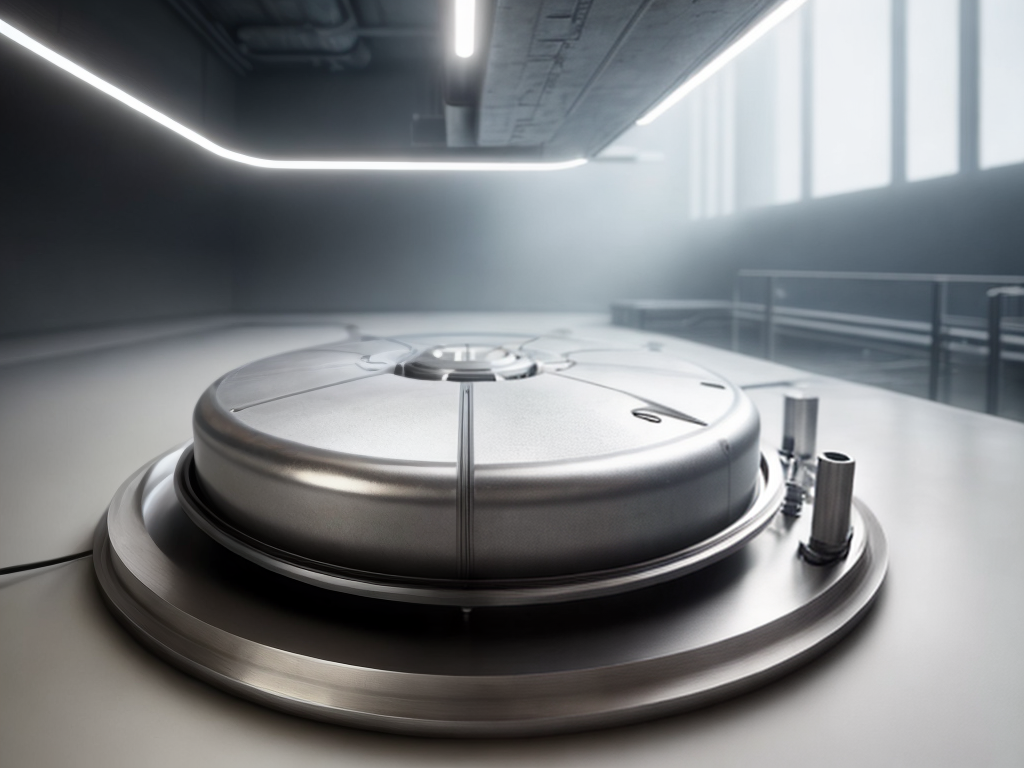
As I stepped into the world of engineering, I found myself faced with a multitude of complex systems and technologies. Among them, valves stood out as an integral component that keeps the wheels of industry turning. Coincidentally, it was during my quest to understand the basics of valve technology that I realized its significance in countless industrial processes. From controlling the flow of fluids to regulating pressure, valves play a crucial role in ensuring efficiency and safety. In this discussion, I will guide you through the fundamentals of valve technology, exploring how they work, the different types available, key factors to consider when selecting valves, and their applications across various industries. So, let’s dive in and unravel the mysteries behind these essential devices that keep our modern world in motion.
Importance of Valves in Industrial Processes
Valves play a crucial role in industrial processes, controlling the flow of fluids and gases with precision and efficiency. They are essential components that ensure the smooth operation of various systems, from oil refineries to power plants. Understanding the importance of valves in industrial processes is key to optimizing their efficiency and ensuring reliable operation.
Valve maintenance techniques are vital for maximizing the lifespan and performance of valves. Regular inspections and maintenance help identify and address potential issues before they escalate into costly failures. This includes tasks such as cleaning, lubrication, and replacing worn-out parts. By following proper maintenance procedures, valves can continue to operate at their peak performance, minimizing downtime and maximizing productivity.
Valve efficiency optimization is another critical aspect of industrial processes. By optimizing valve performance, companies can achieve significant cost savings and improve overall system efficiency. One way to do this is by selecting the right type of valve for a specific application. Proper sizing and selection based on flow requirements can improve efficiency and reduce energy consumption.
Additionally, implementing advanced control systems and technologies can enhance valve efficiency. For example, the use of smart valve positioners and digital control systems allows for precise and accurate control of valve position, reducing unnecessary flow restrictions and improving overall system performance.
How Valves Work: A Step-by-Step Guide
Valves are an essential component in various industrial processes, and understanding how they work is crucial. In this guide, I will explain the key components of valves and their operation process. By breaking it down step-by-step, you’ll gain a clear understanding of how valves function and their role in controlling the flow of fluids or gases.
Valve Components Explained
Exploring the intricate world of valve technology, one can uncover the fundamental components that bring these mechanical marvels to life. When it comes to valves, understanding their materials and maintenance is crucial. Here are four key components that contribute to the functionality and longevity of valves:
- Valve Body: This is the main structure of the valve, typically made of materials such as stainless steel, cast iron, or brass, chosen for their durability and resistance to corrosion.
- Stem: The stem connects the actuator to the valve disc or plug, allowing for control of the flow. It is often made of stainless steel or other high-strength alloys.
- Disc or Plug: This component controls the flow of fluid through the valve. It can be made of various materials, including rubber, plastic, or metal, depending on the application.
- Seals: These are essential for preventing leakage. Seals can be made of materials like rubber, PTFE (polytetrafluoroethylene), or metal, depending on the specific requirements.
Proper valve maintenance, including regular inspections, lubrication, and cleaning, is essential for ensuring their optimal performance and longevity.
Valve Operation Process
To understand the valve operation process, we will explore the step-by-step guide on how these mechanical marvels work. Valves play a crucial role in controlling the flow of fluids or gases in a system. The operation of a valve involves a series of actions that allow it to open and close, regulating the flow as needed. When the valve is closed, it blocks the passage of fluid. To open it, you need to turn the valve handle or actuate the valve using a control system. This action allows the fluid to flow through the valve. Valve maintenance is essential to ensure proper functioning and prevent issues like leakage. If you encounter any problems with valve operation, valve troubleshooting techniques can help identify and resolve the issue. Regular maintenance and troubleshooting are key to keeping valves in optimal condition.
Common Types of Valves and Their Functions
When it comes to understanding valve technology, it is crucial to familiarize oneself with the common types of valves and their functions. Different valves serve different purposes, and having a good grasp of these key valve applications is essential for anyone working with valves. Additionally, understanding valve selection is important in order to choose the right valve for a specific application.
Valve Types and Functions
Different types of valves serve various functions within a system, ensuring the smooth and efficient flow of fluids or gases. Here are four common types of valves and their functions:
- Ball valves: These valves have a spherical closure unit that allows for quick shut-off. They are ideal for applications requiring tight sealing and low torque operation.
- Gate valves: Gate valves control the flow of fluids by raising or lowering a gate inside the valve body. They are commonly used in applications that require full flow or shut-off.
- Globe valves: Globe valves regulate fluid flow using a movable disk that closes against a stationary seat. They offer precise control and are often used in applications that require throttling or frequent adjustment.
- Check valves: Check valves only allow fluid flow in one direction, preventing backflow. They are commonly used to prevent damage to pumps and other equipment.
When selecting a valve, it is important to consider factors such as valve materials and valve sizing to ensure optimal performance and efficiency.
Key Valve Applications
Valve applications play a crucial role in various industries, ensuring the efficient flow and control of fluids or gases within a system. Key valve maintenance and understanding valve materials and construction are essential for optimizing their performance and longevity.
Here is a table summarizing common types of valves and their functions:
| Valve Type | Function |
|---|---|
| Ball Valve | Controls flow with a rotating ball |
| Gate Valve | Controls flow with a sliding gate |
| Butterfly Valve | Controls flow with a rotating disc |
| Globe Valve | Controls flow with a movable plug or disc |
Proper maintenance of valves includes regular inspection, cleaning, and lubrication. Valves should be checked for leaks, corrosion, and wear, and any necessary repairs or replacements should be carried out promptly. Valve materials and construction should be carefully chosen based on the type of fluid or gas being handled and the operating conditions. Understanding the unique requirements of each valve application is vital for ensuring efficiency and reliability in industrial processes.
Understanding Valve Selection
To effectively select the appropriate valve for a specific application, it is crucial to understand the various types of valves and their corresponding functions. Here are four common types of valves and their functions:
- Ball valves: These valves have a spherical disc that controls the flow of fluid. They are ideal for on/off control and provide excellent sealing capabilities.
- Gate valves: Gate valves use a sliding gate mechanism to control the flow of fluid. They are suitable for applications that require full flow or complete shut-off.
- Globe valves: Globe valves have a disc that moves up and down to regulate fluid flow. They are commonly used for throttling and controlling flow rates.
- Check valves: Check valves allow fluid to flow in one direction and prevent backflow. They are essential for maintaining system integrity and preventing damage.
Understanding valve specifications and valve performance is crucial when selecting the right valve for your application. Consider factors such as pressure, temperature, flow rate, and material compatibility to ensure optimal valve performance.
Factors to Consider When Selecting Valves
When selecting valves, it is crucial to consider various factors that will ensure optimal performance and functionality. Two important factors to consider are valve material considerations and valve sizing factors.
Valve material considerations play a significant role in the performance and longevity of the valve. Different materials have different properties that make them suitable for specific applications. For example, stainless steel valves are known for their excellent corrosion resistance, making them ideal for applications involving corrosive fluids. On the other hand, brass valves are commonly used for lower-pressure applications due to their affordability and good resistance to dezincification. Understanding the operating conditions and the compatibility of the material with the fluid being handled is essential in selecting the right valve material.
Valve sizing factors are another important consideration. Proper valve sizing ensures that the valve can handle the required flow rate and pressure drop. When selecting a valve, it is important to consider the maximum and minimum flow rates, as well as the process conditions such as temperature and pressure. Factors such as the Cv value, which represents the valve’s flow capacity, and the valve’s pressure rating, should also be taken into account. Oversized valves may lead to excessive pressure drop, while undersized valves may result in flow limitations and reduced system efficiency.
Valve Applications in Different Industries
Different industries rely on valve technology for a wide range of applications, ensuring efficient and reliable fluid control. Valve innovations and emerging valve technologies have revolutionized various industries, enhancing productivity and safety. Here are some examples of how valves are used in different industries:
-
Oil and Gas: Valves play a crucial role in the oil and gas industry by regulating the flow of oil, gas, and other fluids in pipelines, refineries, and drilling operations. They help control pressure, temperature, and flow rate, ensuring the safe and efficient extraction, transportation, and processing of these valuable resources.
-
Power Generation: Valves are essential in power plants, where they control the flow of steam, water, and other fluids in boilers, turbines, and cooling systems. They help optimize energy production, maintain system stability, and prevent equipment damage, ensuring uninterrupted power supply.
-
Pharmaceuticals: Valves are used in pharmaceutical manufacturing processes to control the flow and transfer of liquids and gases. They ensure accurate dosing, maintain sterile conditions, and prevent contamination, vital in the production of life-saving medications.
-
Water and Wastewater Treatment: Valves are critical in water and wastewater treatment facilities, where they regulate the flow of water, chemicals, and sludge. They help control the treatment process, maintain water quality, and ensure compliance with environmental regulations.
Maintenance and Troubleshooting Tips for Valves
Maintaining and troubleshooting valves is essential for ensuring their optimal performance and preventing costly downtime. Proper maintenance can extend the lifespan of valves and help identify any issues before they become major problems. Here are some maintenance tips and troubleshooting techniques to keep your valves in top shape:
Maintenance Tips:
-
Regular Inspections: Schedule routine inspections to check for leaks, corrosion, and other signs of wear. This will help identify any potential issues early on.
-
Lubrication: Proper lubrication is crucial for valve performance. Follow the manufacturer’s recommendations for lubrication frequency and use high-quality lubricants.
-
Cleaning: Keep valves clean by removing any dirt, debris, or buildup that may affect their operation. Use appropriate cleaning agents and techniques recommended by the manufacturer.
-
Calibration: Periodically calibrate valves to ensure they are operating within the specified parameters. This will help maintain accurate performance and prevent over or underflow.
Troubleshooting Techniques:
| Problem | Possible Cause | Solution |
|---|---|---|
| Valve Leakage | Worn-out seals | Replace seals |
| Loose connections | Tighten connections | |
| Corrosion | Clean or replace valve | |
| High pressure | Adjust pressure | |
| Valve Sticking | Dirt or debris | Clean valve internals |
| Insufficient lubrication | Apply lubricant | |
| Misalignment | Realign valve | |
| Excessive pressure | Adjust pressure | |
| Valve Noisy Operation | Loose parts | Tighten or replace |
| Cavitation | Modify system | |
| Improper installation | Reinstall correctly |
Future Trends in Valve Technology
As we look ahead to the future of valve technology, it is important to consider the potential advancements and innovations that can enhance the performance and reliability of these essential components. With the rapid development of technology, we can expect exciting changes in valve technology that will revolutionize various industries. Here are some trends to watch out for:
-
Smart valve technology: The integration of sensors and actuators in valves will enable real-time monitoring and control. Smart valves will have the ability to gather data on factors such as pressure, temperature, and flow rates, allowing for more accurate and efficient operations.
-
Internet of Things (IoT) impact: The IoT will have a significant impact on valve technology. Valves will be equipped with wireless connectivity, enabling seamless communication with other devices and systems. This connectivity will enable remote monitoring, predictive maintenance, and enhanced control capabilities.
-
Enhanced durability and reliability: Future valves will be designed to withstand harsh environments and demanding applications. Advanced materials and coatings will be utilized to enhance durability and reduce wear and tear. This will result in longer lifespan and reduced downtime for maintenance.
-
Improved energy efficiency: Energy consumption is a major concern in many industries. Future valve technology will focus on optimizing energy usage by implementing advanced control algorithms and innovative designs. This will help industries reduce their carbon footprint and achieve cost savings.
These trends in valve technology will have a profound impact on various industries, ranging from oil and gas to manufacturing and water treatment. By embracing these advancements, companies can enhance their operations, improve efficiency, and achieve higher levels of productivity. The future of valve technology looks promising, and it is essential for businesses to stay informed and adapt to these changes to remain competitive in the evolving landscape.


